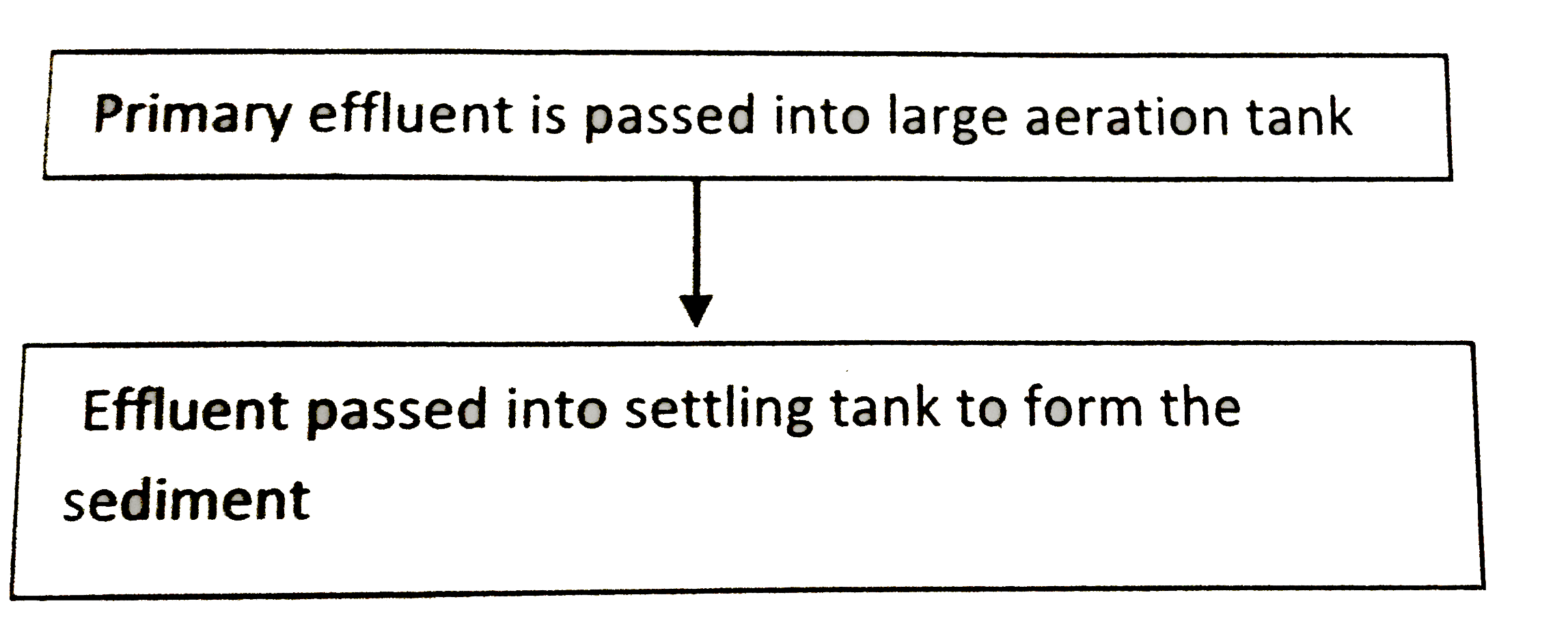Read the following statements w.r.t. biological treatment of sewage. Br a. Involves removal of sewage through sequential filteration. Br b. BOD of waste water is directly proportional to its a polluting potential. Br c. Constant agitation of primary effluent is carried out in large aeration tanks. Identify the incorrect statement(s)
The correct Answer is:B
To identify the incorrect statements regarding the biological treatment of sewage, let's analyze each statement step by step.
Step 1: Analyze Statement A
Statement A: "Involves removal of sewage through sequential filtration."
- Explanation: The biological treatment of sewage primarily involves the use of microorganisms to decompose organic matter. The removal of sewage through sequential filtration is not a part of biological treatment; rather, it is a part of physical treatment or primary treatment. In primary treatment, solid waste is separated from liquid waste through filtration and sedimentation. Therefore, this statement is incorrect.
Step 2: Analyze Statement B
Statement B: "BOD of wastewater is directly proportional to its polluting potential."
- Explanation: Biological Oxygen Demand (BOD) measures the amount of oxygen that microorganisms will consume while decomposing organic matter in water. A higher BOD indicates a higher level of organic pollution, meaning more oxygen is required for microbial decomposition. Thus, BOD is indeed directly proportional to the polluting potential of wastewater. Therefore, this statement is correct.
Step 3: Analyze Statement C
Statement C: "Constant agitation of primary effluent is carried out in large aeration tanks."
- Explanation: In biological treatment, aeration tanks are used to mix the primary effluent with microorganisms and provide oxygen for aerobic respiration. While agitation is important, the statement implies that constant agitation is the primary function of aeration tanks. The main purpose of aeration tanks is to supply oxygen to the microorganisms, not just to agitate the effluent. However, since the statement does not accurately describe the primary function of aeration tanks, it can also be considered incorrect.
Conclusion
The incorrect statements are:
- Statement A: Involves removal of sewage through sequential filtration (incorrect).
- Statement C: Constant agitation of primary effluent is carried out in large aeration tanks (incorrect).
Statement A: "Involves removal of sewage through sequential filtration."
Statement B: "BOD of wastewater is directly proportional to its polluting potential."
Statement C: "Constant agitation of primary effluent is carried out in large aeration tanks."
The incorrect statements are:
- Statement A: Involves removal of sewage through sequential filtration (incorrect).
- Statement C: Constant agitation of primary effluent is carried out in large aeration tanks (incorrect).
Similar Questions
Large quantities of sewage is generated everyday in cities and towns, which is treated in Sewage Treatment Plants (STPs) to make it less polluted. Given below is the flow diagram of one of the stages of STP.
Observe the given flow diagram and answer the questions accordingly

(a) Why primary effluent is passed into large aeration tanks?
(b) Write the technical term used for the sediment formed? Mention its significance
(c) Explain the final step that results in the formation of biogas in the large tank before the treated effluent is released into water bodies.View SolutionRead the following statements carefully and find the incorrect statements:
A. More than 1 percent impurities make domestic sewage unfit for human use.
B. Less BOD causes mortality of fish and other aquatic creatures.
C. Presence of large amounts of nutrients in water also causes excessive growth of planktonic algae, called an algal bloom.
D. Algai bloom causes deterioration of the water quality an decreases fish mortality.
E. Some bloom-forming algae are extremely toxic to human beings and animals.
F. Eichhornia crassipies is the world's most problematic aquatic weed.View SolutionGiven below are the steps involved in sewage treatment. Arrange them in proper sequence and select the correct option.
A. Passage of primary effluent into large aeration tanks for mechanical agitation and pumping of air.
B. Passage of secondary effluent and formation of activated sludge.
C. Physical removal of particles through filtration and sedimentation
D. Release of effluent from the secondary treatment plant into natural water bodies.
E. Growth of useful aerobic microbes into flocs which significantly reduce the BOD.View SolutionRead the following statements carefully. A. Studies suggest that first organisms that invaded land were plants. br B. Saltations are large mutations and directionless while Darwinian variations are small and directional. br C. Sauropsids were common ancestors of therapsids and thecodonts. br D. Homo habilis was the first hominid with brain capacity ranging between 650-800 cc. Choose the correct option w.r.t. True (T) and False (F) statements
View SolutionRead the following statements carefully
A. Stimulates water reabsorption by DCT.
B. Tends to decrease blood pressure.
C. Stimulates diuresis.
D. Helpful in diluting the urine.
E. Acts mainly in the kidneys.
HOW many statement(s) is/are incorrect w.r.t action of ADH?View SolutionRead the following statements carefully and identify correct statements w.r.t. Lichens
a. The association cannot tolerate air pollution, especially due to sulphur dioxide
b. Lichens are annuals and their growth is slow
c. The fungal partner mostly belongs to ascomycetes.
d. Soredia are most efficient means of asexual reproduction
e. Orchids seldom occur without this association
f. Foliose lichens are pioneers of succession in a water body.View Solution

